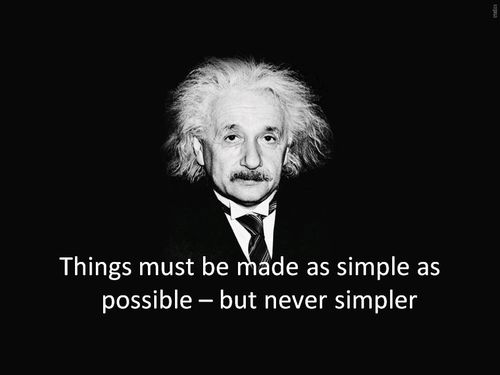Last Updated on July 20, 2020 by John Prendergast
The Path of Least Resistance
The Path of Least Resistance describes the simplest path from point A to point B (physical or metaphorical). It’s the easiest route forward among a given set of alternatives. Water is the bell weather example for seeking the lowest ground by the simplest route.

People are like water. We take The Path of Least Resistance, more aptly we use The Principle of Least Effort, everyday in almost everything we do. It’s so pervasive that it determines the success of every advisors’ business and particularly their marketing strategy.
The notion pops up everywhere if you look carefully. Information science holds that humans will choose the most convenient, least precise method of finding information that is, to the individual, considered “acceptable.” But here’s the kicker:
This behavior holds true regardless of the user’s proficiency as a searcher, or their level of subject expertise. This framework also takes into account person’s previous information seeking experience. A person will use the tools that are most familiar and easy to use that find results.
A Simple Question
Are you on the path of least effort?
It’s a critical marketing question: If a prospective client is seeking an advisor, he/she will use the advisor who takes the least effort to find and work with that they believe will deliver an acceptable result. Simplest to find and work with, in short, the acceptable (NOT best) result.
I’m going to let that sit a second because, for most of you, that’s not going to sit well.
“But I’m the best at what I do and that’s why people work with me…”
Nope.
They may continue to work with you because of that, they may recommend you because of that but they DO NOT HIRE you based on your expertise. See, they can’t really know you’re the best going in. So least effort trumps all… initially.
If a prospective client doesn’t personally know any advisors or firms, they will use the easiest, most familiar tool possible for finding one, which might be asking a friend, a simple google search or even consulting their trusty phone book (if they’re old school).
Let’s flip this around for a second and think about what this means for you:

Here’s a question:
Which type of prospective client do you think is best to target with marketing?
Unaware | Uninterested | Aware | Curious | Interested
The answer certainly isn’t obvious to everyone. And based on behavior it’s known to very few. So you might not be surprised at how many people guess incorrectly. The answer becomes a little clearer when you focus the question.
Try again:
Which type of prospective client do you think is most likely to be persuaded by marketing to make a purchase?
Unaware | Uninterested | Aware | Curious | Interested
Is it more obvious now? The answer, of course, is the “interested” consumer. Why?
THE PRINCIPLE OF LEAST EFFORT!
The goal of any marketing effort is to get the consumer to take action: The Path of Least Effort clarifies that the prospective client most likely to take action is the one closest to a decision. Wait, when I put it that way it’s ridiculously obvious. Still, it’s a useful reminder: People are lazy! They want what they want and when they find something acceptable they stop looking. That means the most effective, efficient marketing will be focused on people who are already interested. It is focused on helping them do what they already want to do rather than trying to convince them of something.
The Path of Least Effort is the reason that:
- Inbound Marketing works (in three posts: ONE | TWO | THREE) – It helps people do what they already want to do
- Simple landing pages lead to higher conversion rates – Fewer choices eliminate distraction
- Being top-of-mind (via social media, referrals or marketing) really pays off. – Familiarity is on the path of least effort
- Streamlined consultations work better than time-consuming, sit-down appointments – Easier to do, easier to schedule
- Trust is so important (consumers don’t have to recognize and sift through bullshit!) – Keeping up my guard requires effort
- LinkedIn is such a valuable tool – Extended familiarity
Above all, what The Path of Least Effort tells us is that in acquiring new clients, simplicity, obviousness, familiarity and being easy to find and work with will ALMOST ALWAYS beat comprehensiveness, thoroughness or performance. It is also ESSENTIAL to know your prospective clients inside and out in order to figure out what their Path of Least Effort is so you can get on it. If you can’t think like your clients, you’re going to fall behind, period.
As always, if you liked this post, subscribe below!